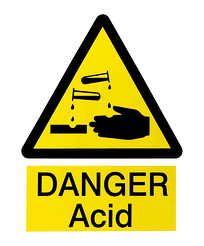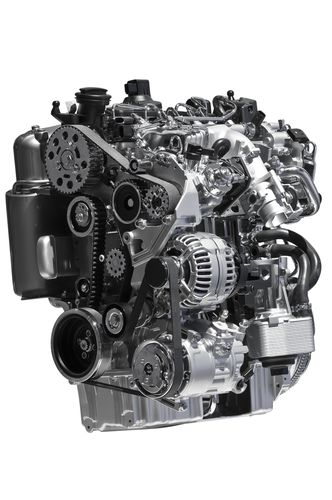
What causes acid buildup?
When water enters a system using phosphate ester hydraulic fluid, it chemically reacts with the fluid. This reaction results in the formation of phosphoric acid. Phosphoric acid corrodes internal surfaces and attacks seals within the hydraulic fluid system. If the acid content is not controlled and is allowed to build up, it will reach a point when acid creation increases in speed. We call this autocatalysis.
It is important to not only manage water entry into the system but also to have a reliable acid scavenge system to control acid content in the fluid.
3 Types of Acid Remediation Media
Attapulgus Clay, or Fuller's Earth (FE), is the first generation of acid scavenge media. FE acid scavenging capacity is very low (2 grams me/ft3). In addition, the FE media often leaches solid contamination into reservoirs. The elements within the media (Mg, Fe, Ca) react with phosphate ester to form deposits on surfaces and when the dissolved metal content exceeds 10ppm fluid air release property will deteriorate.
Activated alumina (AA), known also as Y-Zeolite or faujasite, is the 2nd generation of acid scavenging media. AA capacity (5 grams me/ft3) is higher than
Ion Charged Bonding (ICB) acid scavenge media is the 3rd generation of acid scavenge media. Comparing the same size canisters, ICB canisters (15 grams me/ft3) have 3x capacity vs. AA and 7x capacity versus FE. ICB media is a formulation of resin beads which are not able to migrate from the canister, therefore eliminating any solid contamination being leeched into the hydraulic fluid via the acid scavenging canister. Additionally, no chemical reaction occurs, meaning no metal salt formation, no gel formation and no reduction in air release property caused by the acid scavenge media. ICB media will also remove dissolved contaminants added to the system from activated alumina or Fuller's Earth.
How do I remove existing acid from my EHC system?
Normally, EHC systems are built with an acid scavenging side loop attached to the reservoir. The acid removal canisters and side loop flow rate should be sized to maximize residence time for acid scavenge to occur. Generally, the flow through these canisters is approximately 1 gallon per minute (
One of the most common reasons an EHC system experiences a high AN is the capacity of the media. In a very short period of time, a high AN can completely deplete an activated alumina or Fuller's Earth canister. This will cause acid to quickly build back up to levels prior to the new canister being installed if frequent testing is not performed.
How do you test the acidity?
In order to ensure a clean and reliable fluid system, periodic fluid samples should be taken. These fluid samples should be analyzed by a laboratory experienced in handling "synthetic phosphate ester" fluid. It is important that the fluid samples are taken using proper procedures from a confirmed sample port to guarantee accurate results.
ICB Acid Scavenge Technology
ICB acid scavenge technology is the latest generation of acid scavenge media. Use ICB in place of AA or FE to eliminate a major solid particulate contamination ingression source and to eliminate chemical reactions that result in metal salts and gel formation. As discussed earlier, these problems cause a reduction in fluid air release properties and damaging deposits. Use ICB to clean the fluid of dissolved metals originating from AA, FE or the environment itself. In addition, use a headspace dryer to supply a clean dry positive air flow across the top of the oil level in the reservoir. This will control the water content in the system, directly affecting new acid production. More on the headspace dryer in an upcoming blog.







